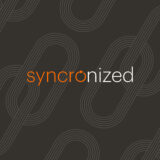In a perfect world, your MSP could keep things running so smoothly for your clients that they never need to reach out for help. Of course, we don’t live in a perfect world. And no matter how effective your MSP is, you will periodically need to provide customer support. This is where a quality MSP help desk can make all the difference.
What is an MSP help desk?
An MSP help desk is a system that allows clients to notify their MSP when they need help with an IT problem. The help desk serves as the go-to line of support when something goes wrong for your customers and they need your assistance to fix it.
While many MSPs utilize an in-house help desk to troubleshoot basic needs and coordinate the work of their technicians, MSP help desk outsourcing has also become a major sub-niche in the industry. Some MSPs prefer to outsource the help desk so their team can be fully focused on servicing client needs in a timely manner and aiding them in strategic digital transformation efforts.
MSP help desk vs. service desk
In the world of MSPs, you’ll sometimes see the terms “help desk” and “service desk” used almost interchangeably. However, these actually describe two separate functions, both of which can be beneficial to your clients.
Help desk
A help desk is what most people traditionally associate with IT support. The MSP help desk responds to client requests to fix IT problems, from troubleshooting an app that isn’t functioning properly to repairing malfunctioning equipment. Help desks are reactionary. They don’t reach out to the clients. Instead, they wait for clients to reach out with a problem, and then determine the best course of action for resolving it.
Service desk
Service desks operate similarly to help desks, but they tend to be more proactive. Rather than waiting for clients to reach out with an IT problem, the service desk is engaged in proactive efforts to keep client systems, hardware, and software fully up to date. This way, an efficient service desk can minimize the number of help requests that clients need to submit.
Why would businesses want an MSP help desk?
An MSP help desk offers several noteworthy benefits, particularly for companies that use MSP help desk outsourcing.
24/7 support
A managed help desk offers 24/7 support for your clients. No matter when they experience an issue, they will be able to get ahold of someone who can help determine the appropriate steps for resolving their problem. In some cases, issues can be resolved without direct action from your own IT team. This can be especially helpful when you have clients spread across several time zones.
Reduced admin tasks for IT team
MSP help desk work can become a significant administrative burden for IT teams. Instead of focusing on innovative activities like machine learning and cloud computing, they spend a lot of time walking clients through basic troubleshooting activities. Though important, helping clients with basic issues can ultimately detract from your team’s ability to engage in higher-value work. An outsourced MSP help desk returns your team’s focus to proactively improving clients’ technology use to drive greater value.
Lower costs
Training existing staff to manage a help desk can increase costs for your business, especially when you need to provide appropriate hardware and software for that specific role. Assigning a skilled IT technician to this role results in lost income from the time they could spend doing higher-value tasks. And entry-level help desk workers often experience high turnover, resulting in ongoing staffing and training costs. Because of this, MSP help desk outsourcing is often the cheaper solution.
Lower call volume
A well-organized help desk with well-trained staff can ultimately lower overall call volume while simultaneously improving call resolution time. Quick diagnosis and resolution of issues means clients spend less time on the phone, while also reducing the likelihood that they’ll have to make multiple phone calls to successfully resolve the issue. This lowers costs and frees up more time for an MSP’s technicians.
Scalability
Outsourced MSP help desks can scale up or down based on the needs of the MSP’s clients. This way, MSPs don’t have to worry about hiring additional staff for periods when they might experience a higher-than-normal call volume. This level of flexibility allows MSPs to keep help desk costs at a more manageable level.
Support for emergencies
Certain events, such as a natural disaster, could impact and limit an in-house help desk’s capabilities. Outsourced help desks provide an extra line of support so that MSPs can provide continuous service, regardless of anything else that happens.
How do you start an MSP help desk business?
The level of value that MSPs can derive from outsourced help desks means that there is a very real market for MSP help desk businesses. Whether starting your own MSP help desk business or optimizing an in-house help desk, the following guidelines should be considered an absolute must.
Choose your service offerings
The first step is to determine what services you will provide through your help desk. A clearly defined scope of operations will ensure that your help desk can provide efficient services to clients, whether or not they can address the problem themselves.
Choosing your service offerings will set the baseline for creating a workflow for how you will respond to different types of support requests. Make sure to determine service offerings in a manner that will keep the scope of work manageable for your team.
Hire and train
You will need to hire and train an appropriate number of support engineers to run your help desk. Keep in mind that to provide 24/7 services, you would likely need to have at least eight engineers on staff. Because of this, most MSP help desks initially limit their available hours, and gradually scale up as needed based on overall client demand and scheduling needs.
All MSP help desk hires (whether using existing staff or making a brand new hire) will need to be trained to not just effectively troubleshoot the issues they’ll be dealing with, but also on your defined help desk procedures and how to use any software specific to your operations.
Help desk staff will also need to be trained on how to effectively communicate and interact with clients. A calm, professional demeanor can make all the difference when dealing with a frustrated customer, particularly when speaking with them on the phone.
Create a schedule
An MSP help desk’s schedule should be built around the needs of its customers. Consider the business hours and scheduling of your clients, as their normal business hours are when the vast majority of your help desk requests will come in.
To start with, make sure that your help desk is fully staffed and open during those business hours when the majority of your clients are most likely to need support. If you have a few clients who are located in a different time zone or may need overnight assistance, be sure to have at least one engineer available during those hours as well.
As time goes on, you can (and should) adjust your schedule as needed based on the timing of when you receive support requests. 24/7 availability isn’t always a necessity. But ensuring that you have enough engineers to help during those peak support times should always be a top priority.
Develop a ticketing system
The MSP help desk ticketing system is how you track and manage every customer support request. Each ticket records the support request, as well as your team’s actions to resolve the issue. The ticket remains open until the issue has been successfully resolved.
A successful ticketing system relies on clear labeling and logical organization. Tickets can be labeled with a variety of attributes (such as the type of problem or the client’s industry) for easier search and analysis. Tickets should also be assigned a priority level based on the severity of the issue, the number of users or services affected, and time sensitivity.
Proper labeling and priority settings will ensure that tickets are assigned to the right engineers promptly so you can resolve issues in a way that satisfies your customers. Syncro can help you automate ticket workflow management to make this process even more efficient!
Create a knowledge base
The knowledge of each individual engineer becomes much more powerful when it can be shared. A knowledge base allows your team to scale their knowledge and experience on a variety of IT issues.
Knowledge base articles serve as a “how-to” reference point that your team can use to guide their actions as they help clients resolve recurring issues. Your knowledge base can be especially beneficial for training new hires regarding procedures and recommended actions.
Ideally, you should use a web or cloud-based knowledge base, as this will allow your engineers to access needed information from anywhere (including when they are working remotely).
Analyze your progress
Your MSP help desk should always be viewed as a work in progress. Regularly collecting and analyzing help desk metrics will help you identify areas for improvement, as well as recurring issues your clients are experiencing.
Some key statistics to analyze include the number of requests received during a single week, the average length of time to resolve a ticket, and how much time is spent on different types of service requests. Analyzing these data points in real-time will help you quickly identify and address any problems with your MSP help desk — such as instances where engineers need more training on a particular issue, or when tickets aren’t being prioritized properly.
Customer surveys can be an especially valuable tool for analyzing your progress. Even something as simple as asking customers to provide a rating after resolving a ticket can help you identify and correct potential issues. Targeted surveys of dissatisfied customers can offer deeper insights into areas that need to be improved.
Fine-tune your SLAs
Whether you’re adding a help desk to your existing MSP or launching an MSP help desk business, you must fine-tune your SLA (service-level agreement) accordingly to reflect these services.
Your SLA should clearly define the scope of the services you can offer through your help desk (including what you don’t cover), the hours when you are available to provide support, how clients should report issues, and how you classify issues. You can even set expectations for resolution times, including when requests are sent outside your help desk’s available hours.
SLAs should be specific and realistic regarding these and other issues. Your SLA should also detail client obligations (such as upgrading outdated hardware or following security procedures). An effective SLA will also include protections from third-party liability and a clause for how you can end your service agreement.
Regardless of the specific nature of your billing model and client contracts, the SLA will offer much-needed clarity on what type of MSP help desk services you deliver, and how and when you’ll deliver them.
Get started with Syncro
If you’re looking to launch your own MSP help desk, Syncro can help. Syncro simplifies MSP help desk tasks with a streamlined dashboard and powerful automation tools so even small teams can service more customers.
Learn how Syncro can help you take your MSP help desk to the next level.
Share














